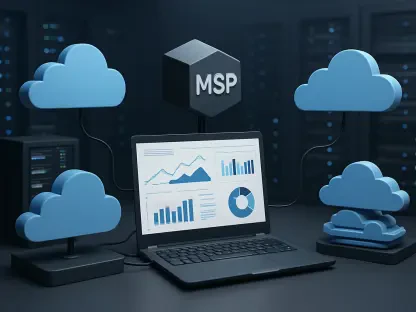As cloud computing dominates the technology landscape, Oracle’s strategic recalibration to enhance its cloud offerings is generating significant buzz. The move sees Oracle expanding partnerships with industry leaders like Amazon Web Services (AWS) and Microsoft Azure. However, while embracing cloud integration, Oracle steadfastly adheres to its foundational perpetual licensing model. This analysis delves into the resulting market dynamics, examining how Oracle navigates its dual strategy to remain relevant and competitive in an evolving digital ecosystem.
Evolving Cloud Alliances and Licensing Tactics
Oracle’s journey into the cloud is emblematic of a broader shift in IT service delivery, marked by strategic collaborations with top-tier cloud providers. Historically an on-premises giant, Oracle now extends its database capabilities onto AWS and Azure, offering customers a wider operational bandwidth. This strategic shift is illustrated by Oracle’s recent unveiling of Oracle Database@AWS, accessible in pivotal U.S. regions. Such collaborations not only broaden Oracle’s market reach but significantly enhance user experience by optimizing database performance through cutting-edge cloud infrastructure.
Yet, Oracle’s steadfast emphasis on perpetual licensing presents a fascinating dichotomy. Despite the cloud industry’s inclination towards subscription models, Oracle maintains its perpetual license stance through the Bring Your Own License (BYOL) program. This initiative encourages customers to mobilize their pre-existing Oracle licenses when transitioning to the cloud, granting them substantial cost reductions and operational continuity. This offers a competitive edge for existing clients, balancing Oracle’s traditional model with modern cloud demands.
Market Trends and Emerging Strategies
Oracle’s expanded cloud offerings reflect broader trends in multi-cloud integration and heightened demand for versatile IT solutions. By embedding database services within AWS and Azure infrastructures, Oracle capitalizes on clients’ desires for cross-platform flexibility. Furthermore, Oracle’s continued promotion of the perpetual license model underscores its intent to uphold legacy financial streams, capturing the benefits of recurring support revenue associated with these licenses. Analysts view this dual strategy as Oracle’s hedge against the volatility of subscription-based income, asserting financial stability through robust long-term agreements.
Additionally, Oracle’s licensing approach is mindful of intricate regional dynamics. Each market’s regulatory frameworks and economic conditions necessitate tailored strategic adaptations, particularly in bridging Oracle’s legacy licensing models with regional cloud infrastructure rules. Analysts suggest that Oracle’s offerings like Oracle Database@AWS are particularly advantageous in regions under Oracle Cloud Infrastructure (OCI) regulations, which may provide more beneficial licensing terms and features—such as complimentary access to premium Oracle Database Enterprise Edition packs tailored to local needs.
Strategic Implications and Future Opportunities
Oracle’s future trajectory in the cloud landscape is shaped by strategic partnerships and technological advancement. As enterprises increasingly adopt hybrid and multi-cloud solutions, Oracle is poised to innovate, leveraging artificial intelligence and advanced analytics to enrich its cloud capabilities. The dual focus on cloud expansion and license retention will necessitate Oracle to continuously assess market trends and customer preferences, realigning its offerings to meet emerging demands and opportunities. Industry experts predict that the balance between traditional licensing benefits and modern cloud functionalities will define Oracle’s long-term success.
Reflections and Strategic Insights
The analysis of Oracle’s strategic maneuvers underscores a nuanced blend of innovation and tradition, illustrating how the company navigated competitive and technological shifts to maintain market relevance. As enterprises navigate the complexities of integrating cloud solutions within legacy systems, Oracle’s methodologies offer critical insights. Businesses may focus on leveraging Oracle’s BYOL agreements to optimize database efficiencies while evaluating regional licensing intricacies to maximize value. By understanding the intersections between Oracle’s enduring licensing schemes and evolving cloud strategies, enterprises can strategically position themselves for successful cloud adoption and enhanced operational agility.
Oracle’s journey highlights the importance of adaptable strategies, bridging legacy strengths with future-focused endeavors. The company’s ability to deliver cohesive, cost-effective solutions through its partnerships and licensing models empowers enterprises with the tools necessary for sustaining a competitive advantage in the cloud era.









